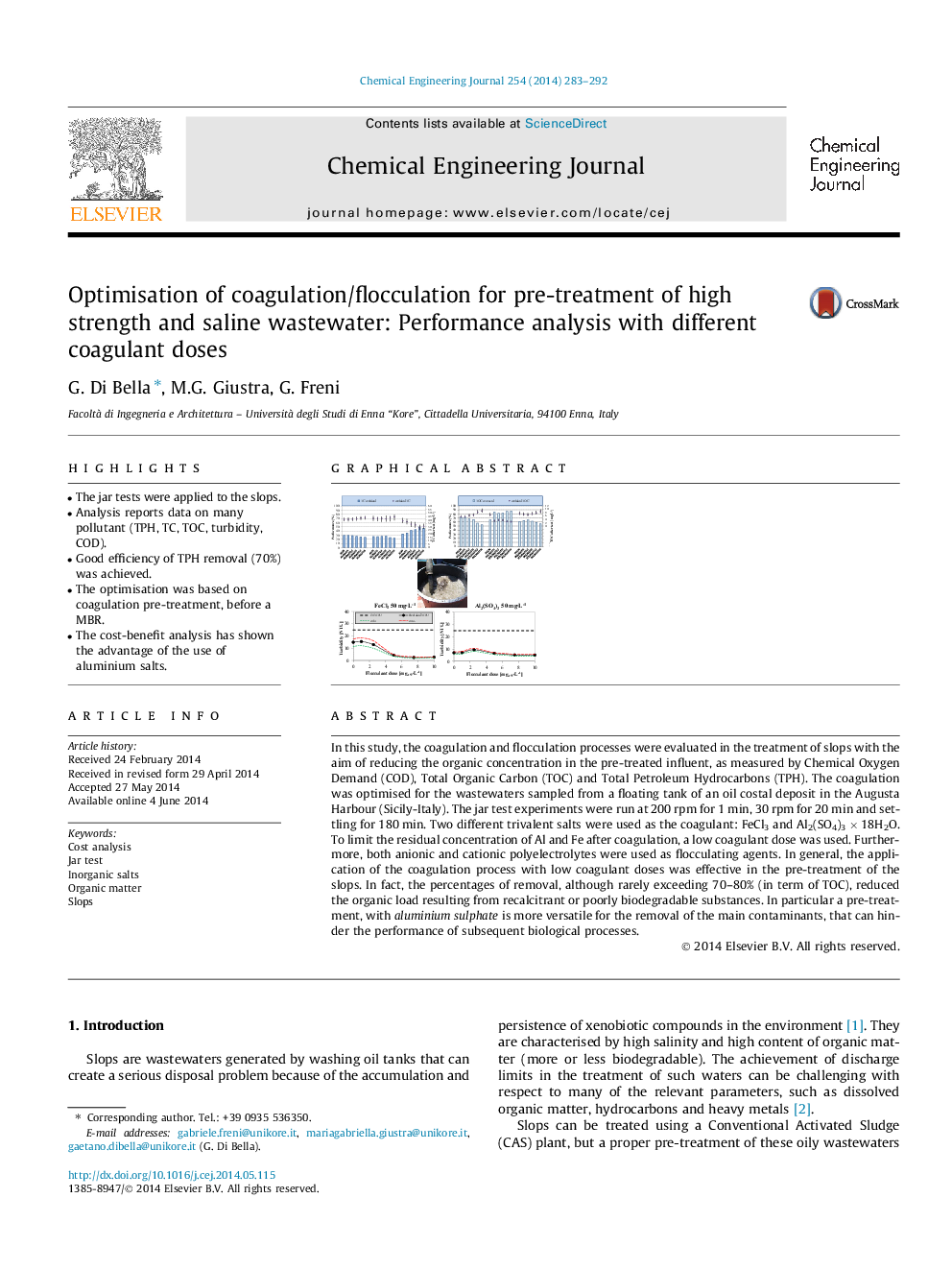| Article ID | Journal | Published Year | Pages | File Type |
|---|---|---|---|---|
| 147258 | Chemical Engineering Journal | 2014 | 10 Pages |
•The jar tests were applied to the slops.•Analysis reports data on many pollutant (TPH, TC, TOC, turbidity, COD).•Good efficiency of TPH removal (70%) was achieved.•The optimisation was based on coagulation pre-treatment, before a MBR.•The cost-benefit analysis has shown the advantage of the use of aluminium salts.
In this study, the coagulation and flocculation processes were evaluated in the treatment of slops with the aim of reducing the organic concentration in the pre-treated influent, as measured by Chemical Oxygen Demand (COD), Total Organic Carbon (TOC) and Total Petroleum Hydrocarbons (TPH). The coagulation was optimised for the wastewaters sampled from a floating tank of an oil costal deposit in the Augusta Harbour (Sicily-Italy). The jar test experiments were run at 200 rpm for 1 min, 30 rpm for 20 min and settling for 180 min. Two different trivalent salts were used as the coagulant: FeCl3 and Al2(SO4)3 × 18H2O. To limit the residual concentration of Al and Fe after coagulation, a low coagulant dose was used. Furthermore, both anionic and cationic polyelectrolytes were used as flocculating agents. In general, the application of the coagulation process with low coagulant doses was effective in the pre-treatment of the slops. In fact, the percentages of removal, although rarely exceeding 70–80% (in term of TOC), reduced the organic load resulting from recalcitrant or poorly biodegradable substances. In particular a pre-treatment, with aluminium sulphate is more versatile for the removal of the main contaminants, that can hinder the performance of subsequent biological processes.
Graphical abstractFigure optionsDownload full-size imageDownload as PowerPoint slide
